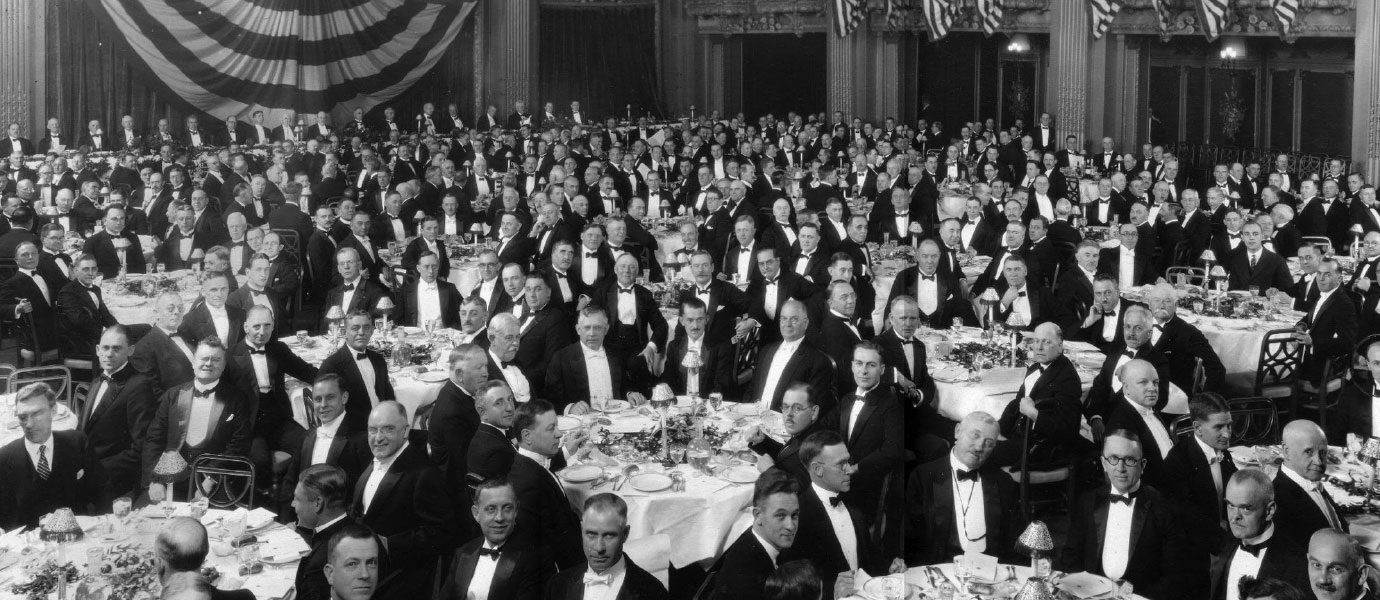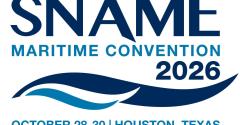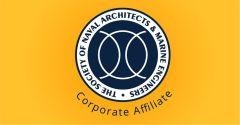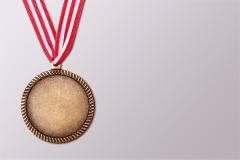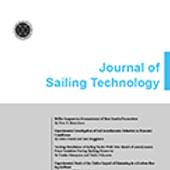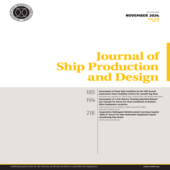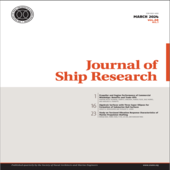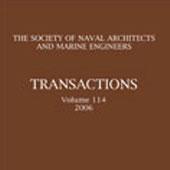Technical and research (T&R) | Bulletins and reports
For a long time Panel H-7 of the Hydrodynamics Committee, SNAME, has been concerned with evaluating the seakeeping performance of ships. Both experimental and theoretical techniques for determining the motions of alternative ship designs in regular and irregular waves have advanced rapidly in recent years. But questions have remained as to what is good behavior and what is bad, what is acceptable and what is unacceptable performance. In short, how can standards of "seakeepability" be established? The Panel hopes that this survey will clarify a difficult and important problem and that others will use it as a basis for further development of techniques for evaluating ship environmental operability.
This Bulletin is a condensation of available practical information on the various aspects of ship propeller forces and propeller-induced hull forces arising from the spatially non-uniform flows to which almost all ship propellers are subjected. The work embraces brief physical descriptions of the manner in which blade frequency pressures are generated by propellers; the attending induced pressures on nearby structures to produce hull forces; the forces on the propeller itself and the blade-bending moment and a distillation of experimental results from model tests and full-scale measurements which reveal the dominant effects of certain parameters as currently exhibited.
In addition, the wave spectra are organized into spectral families, based on wave height and wave period groups, to facilitate comparison of general characteristics. It is concluded that the overall trends derived from the analysis confirm the observations made for Station "India" and Station "Papa." However, the small number of samples is judged to be insufficient for determining long term trends or for direct comparison with other ocean locations.
In a series of chapters, Professor Lewis has compiled a report on the status of seakeeping research in the united States as applied to commercial type ships. After an introduction, the report covers theory, data and needed research as regards the environment, ship motions, derived responses, applications, and concludes with a summary of needed seakeeping research. This report conveys the opinions of Professor Lewis, Panel H-7 and the Hydrodynamics committee and does not necessarily reflect the opinion of the SNAME as a whole.
This Bulletin is a bibliography containing abstracts of journal articles and reports on various aspects of ship control and controllability published in 1982. It is divided into 32 sections covering specific aspects of controllability and vessel types. This Bulletin is a historical reference.
T&R Bulletin 1-41 (1983) supersedes existing the T&R Bulletin 1-27 (1966).
Ship control considerations in recent years have included a greater appreciation of environmental situations, a significant increase in the size of ships, and the use of computer technology and simulation. These have made it necessary to revise end update The Society of Naval Architects and brine Engineers Technical and Research Bulletin No. 1-27, the "Notes on Ship Controllability, 1966". These notes are intended to provide guidance for vessel designers and owners on questions fundamental to good design leading to acceptable maneuvering and controllability of vessels. This Revision retains the useful material of the 1966 notes, and includes new and expanded material developed from advanced technology. The subject matter is limited to topics of immediate importance and is not intended to replace, but rather to supplement the SNAME publication entitled, "Principles of Naval Architecture".
